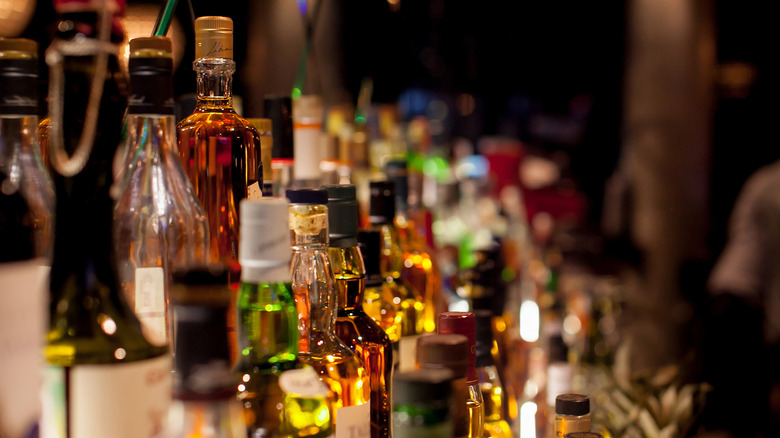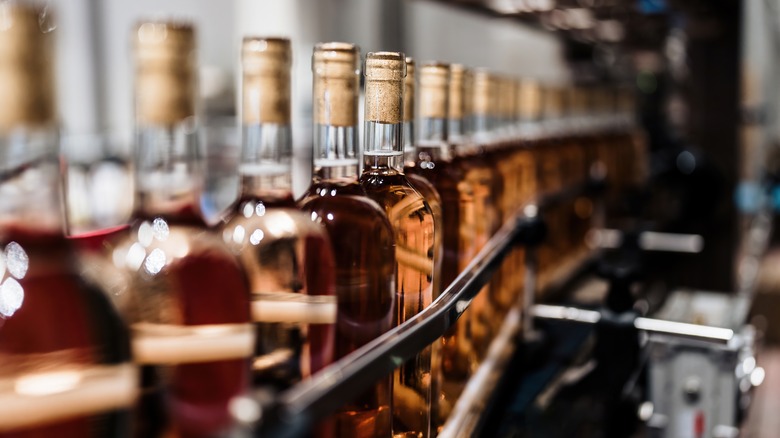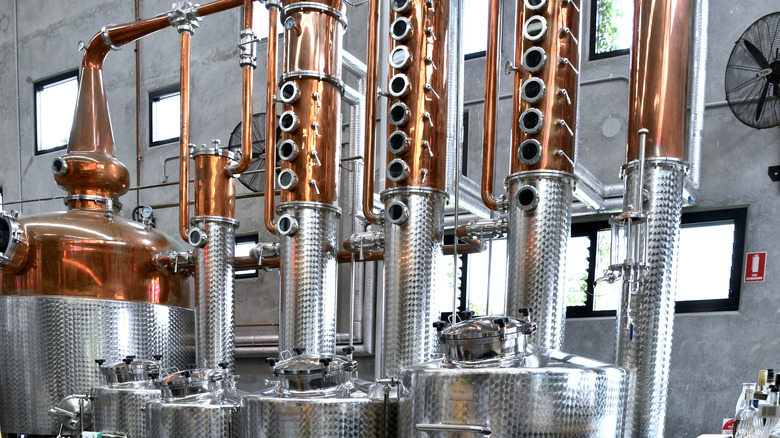What Does It Mean To 'Marry' Liquor Bottles, And Why Is It Harmful?
Spending a night at a bar can certainly be a fun way to let loose and mingle, but a bar night that runs smoothly requires a level of responsibility on the part of both the patrons and the bar staff. While it is up to the patrons to know their limits and treat the space with respect, it is up to the bar staff to keep that space and all the inventory in line with local and federal laws. Whether it is a swanky rooftop bar or an underground dive, as long as the venue wants to keep its liquor license, it must abide by the same rules for the safety of everyone involved.
This is why you will never see a responsible bartender pouring the leftover contents of one liquor bottle into another or what's called 'marrying' liquor bottles. This practice is not only risky, but it is a blatant violation of the law.
Not a marriage worth raising a toast for
According to the consumer safety website SafeProof.org, marrying liquor directly violates 26 U.S. Code § 5301, which bans refilling liquor bottles in any way. Barkeepers may be tempted to marry their liquor bottles so that they do not have to keep two open bottles of the same brand on their shelves, and, at first, it may not seem to matter that the contents of the bottles are combined as long as they are the same product.
The danger of pouring them together, though, comes with the chance of one bottle being contaminated in any way and subjected to recall. As the website explains, "Even though the appropriate brand is poured into a correctly labeled bottle, they are from different distillation batches. If one batch should be recalled for a quality problem, such as excessive alcohol or contaminants, the bottle code no longer reflects its content after marrying bottles." In essence, letting the tainted liquor contaminate an untainted bottle puts more consumers in harm's way.
Recalls are not to be taken lightly
Liquor manufacturers, no matter how big or small, are susceptible to mistakes, and like any product on the market, there is always a chance that a recall will be implemented. In 2017, for instance, the gin brand Bombay Sapphire issued a recall for bottles from a specific batch because its alcohol content was higher than what was printed on the label. Consumers were downing more alcohol than they had been led to believe, which could have left them intoxicated at levels beyond their tolerances. This is just one way a production process can be turned topsy-turvy and inadvertently put consumers at risk. No matter the reason, these recalls are meant to protect consumer's health and safety, so they should always be taken seriously.
The bottom line is if you catch a glimpse of a bartender carelessly topping off a liquor bottle on the shelf, you may be inclined to report the matter. Or, at the very least, try to avoid that liquor.


